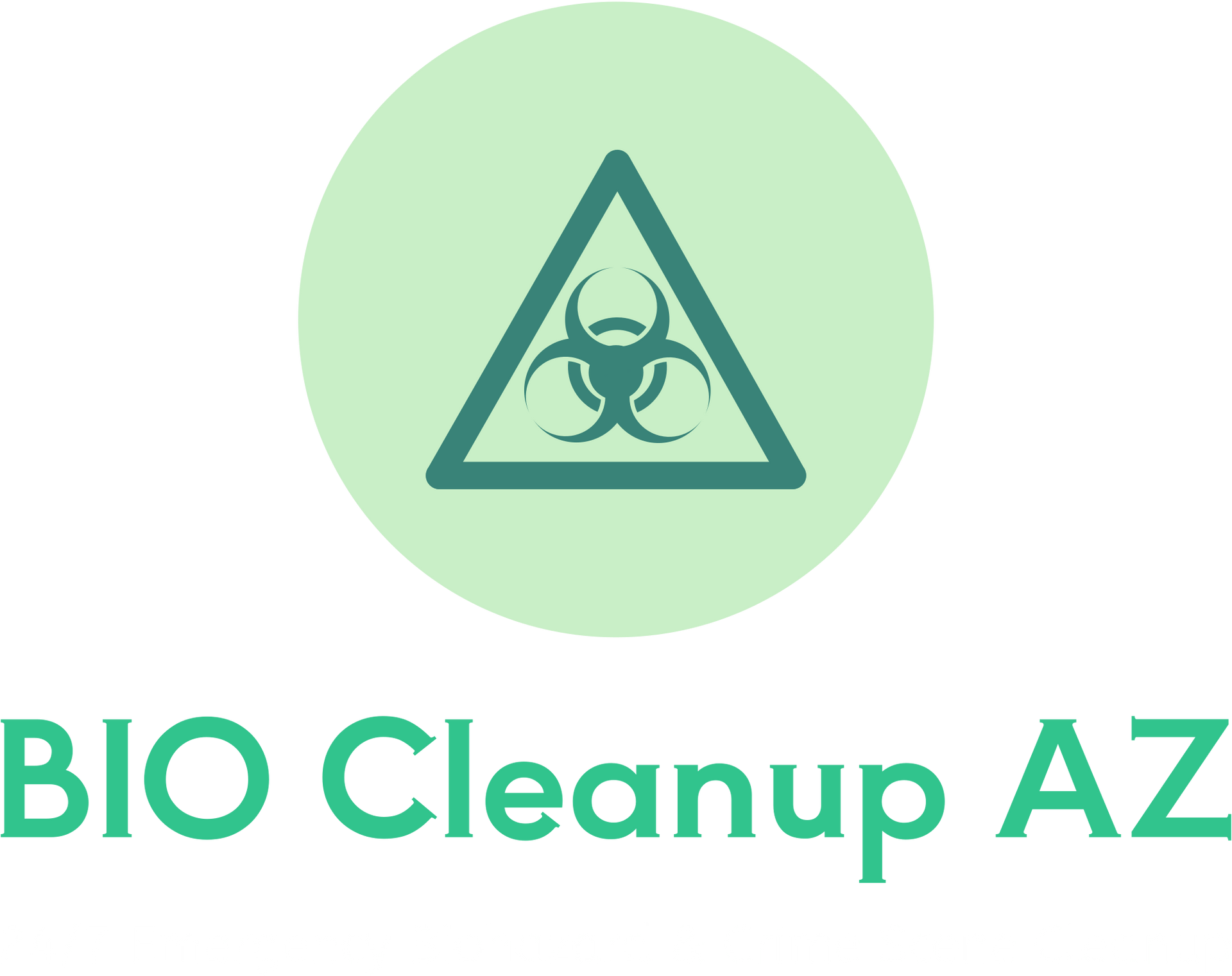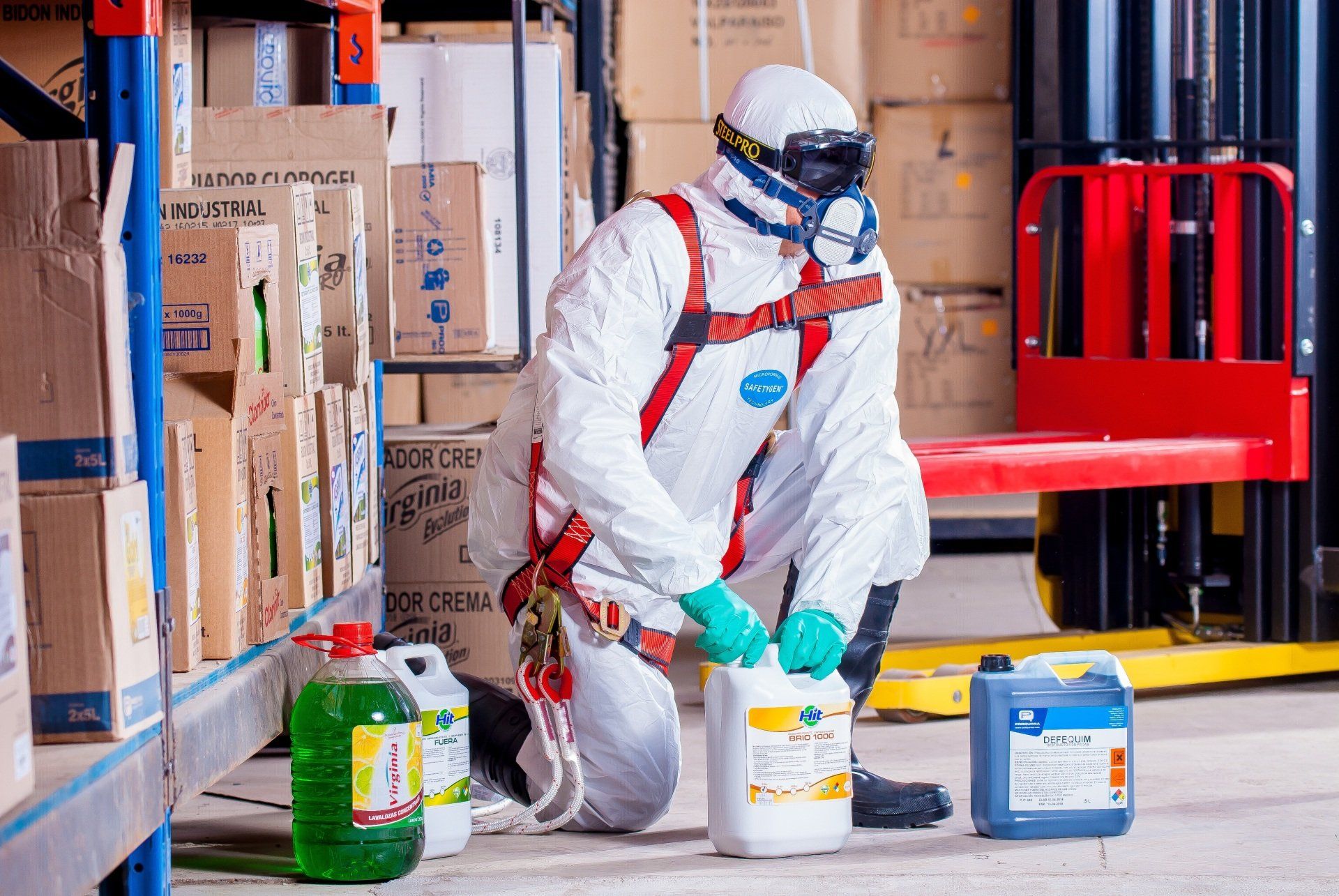Behind the Biohazard Suit: A Look at the Specialized Equipment We Use for Safe Cleanup

When you're facing a difficult and potentially hazardous situation in your home or business, the scene can feel overwhelming. It’s a moment often filled with stress and uncertainty. You know you need help, but what does that professional help actually look like? You might picture someone arriving in a sterile white biohazard suit, and you'd be right.
That suit, however, is just one piece of a complex system designed for one primary purpose: safety. Your safety, and the safety of our technicians.
This gear isn't for show. It’s a direct reflection of our commitment to handling every situation with the highest level of care and professionalism. We want to pull back the curtain and walk you through the specialized equipment we use. Understanding what goes into a safe cleanup can, we hope, provide some reassurance during a challenging time. You'll see that when you call us, you're not just hiring a cleaning service; you're bringing in a team of highly trained experts equipped to restore safety to your environment.
More Than Just a Suit: Understanding Personal Protective Equipment (PPE)
Before we talk specifically about the suit itself, it’s important to understand the broader concept of Personal Protective Equipment, or PPE. This is a term you've likely heard a lot more in recent years. In our field, PPE is the entire wardrobe our technicians wear to create a complete barrier between themselves and any potential dangers at a scene.
These dangers can include bloodborne pathogens, bacteria, viruses, and other microscopic threats that are invisible to the naked eye. The goal of our biohazard cleanup PPE is twofold:
- Protect the Technician: First and foremost, the gear protects the health of our team members who are working directly with hazardous materials.
- Prevent Cross-Contamination: Just as importantly, it prevents them from accidentally carrying contaminants out of the affected area and into other parts of your property, or worse, back into the community.
-
Think of it as a personal cleanroom. Everything inside the gear stays clean, and everything outside stays contained. This system includes respirators, multiple layers of gloves, specialized boots, and, of course, the biohazard suit.
The Heart of Protection: A Closer Look at the Biohazard Suit
The biohazard suit is perhaps the most recognizable piece of our equipment. It's the impermeable shell that shields our technicians from direct contact with hazardous substances. But it’s a bit more advanced than just a simple plastic jumpsuit.
These suits are typically made from materials like Tyvek, a brand name for a non-woven material made of high-density polyethylene fibers. It feels a bit like paper but is incredibly strong, tear-resistant, and, most importantly, it provides an excellent barrier against tiny particles and liquids.
The design is also critical. A professional biohazard suit will have:
- Taped or Sealed Seams: The stitching is often covered with a special tape to ensure that no microscopic particles can get through the needle holes.
- Protective Zipper Flaps: The zipper is a potential weak point, so it’s covered by an adhesive flap to create a perfect seal.
- Elastic Cuffs: The wrists and ankles have elastic bands to create a tight fit against gloves and boots, closing another potential entry point.
This single-piece garment is designed to leave absolutely no skin exposed. It’s the core of the barrier that allows us to work methodically and safely.
Not All Hazards Are Equal: The Different Levels of Biohazard Suits & PPE
One of the most important things to understand is that we don't use the same level of protection for every single job. The Occupational Safety and Health Administration (OSHA) has defined different levels of PPE to match the specific risks of a given situation. Choosing the right level is a key part of our initial on-site assessment. It shows we understand the risks and aren't just taking a one-size-fits-all approach.
Here’s a simple breakdown of the levels you might see:
- Level D Protection: This is the most basic level. It consists of standard work clothes, like a uniform or coveralls, plus safety glasses and steel-toed boots. You could think of it as a general construction site outfit. It offers no protection against chemical or biological agents and is not used for biohazard remediation.
- Level C Protection: This is a significant step up and is commonly used in biohazard cleanup where the type of contaminant is known and the risk of airborne transmission is lower. It includes a chemical-resistant suit (like the Tyvek suit we discussed), inner and outer gloves, and an air-purifying respirator (APR). This respirator uses filters to clean the air before it's inhaled.
- Level B Protection: Level B is for situations where the primary threat is respiratory, but the substance is not as dangerous to the skin. The key difference here is the breathing apparatus. Technicians wear a self-contained breathing apparatus (SCBA)—the same kind firefighters use—which provides its own clean air supply. The SCBA is worn on the outside of the chemical-resistant suit. This level offers the highest degree of respiratory protection but less skin protection than Level A.
- Level A Protection: This is the highest level of protection available. It’s required when the hazardous substance is unknown or when there's a serious threat to both the skin and respiratory system. The biohazard suit in Level A is a fully encapsulated, vapor-tight suit with the SCBA worn inside the suit. It’s a completely self-contained environment, offering total protection from gases, vapors, and liquids.
For most trauma and biohazard scenes we encounter, a modified Level C is standard practice. However, our teams are trained and equipped to use higher levels of protection should the assessment demand it.
The Supporting Cast: Essential Gear Beyond the Suit
The biohazard suit gets all the attention, but it’s ineffective without its supporting equipment.
Breathing Safely: The Critical Role of Respirators
We can’t overstate the importance of clean air. Depending on the PPE level, our technicians will use either:
- Air-Purifying Respirators (APRs): These masks use specialized cartridges to filter contaminants from the air. We choose the specific cartridge based on the type of hazard we expect to encounter.
- Self-Contained Breathing Apparatus (SCBA): For the most dangerous or unknown airborne threats, an SCBA provides a tank of clean air, completely isolating the technician's lungs from the environment.
Hands and Feet: Double-Gloving and Specialized Boots
Our hands are our primary tools, so they need robust protection. Technicians will almost always wear two pairs of nitrile gloves. The outer layer can be removed if it becomes heavily soiled, revealing a clean pair underneath and minimizing the risk of contamination. Over their work boots, they wear disposable, liquid-proof booties that are securely taped to the suit.
Seeing Clearly: Eye and Face Protection
Splash-proof goggles are essential to protect the eyes, which are a primary mucous membrane and an easy entry point for pathogens. In many cases, a full-face shield is worn over the respirator for an added layer of protection against splashes.
The Cleanup Process: How We Use Our Gear on Your Property
Seeing our team gear up can be an unusual sight, but every step is deliberate and follows a strict protocol.
- Donning (Putting it on): Our technicians lay out their equipment and put it on in a specific order to ensure every seal is perfect and nothing is forgotten. This is done in a designated "clean zone" away from the main affected area.
- Decontamination Work: Once inside the "hot zone," the team works to clean, disinfect, and remove all hazardous materials. The gear allows them to focus completely on the task at hand without worrying about their personal safety.
- Doffing (Taking it off): This is arguably the most critical phase. Removing contaminated gear improperly can lead to exposure. Technicians follow a slow, careful, multi-step process. They typically set up a decontamination corridor to remove the gear. The outer gloves come off first, then the suit is rolled down and away from the body, and so on, until only their inner gloves are left, which are the last things to be removed.
All used, disposable PPE is then placed into specially marked biohazard disposal bags, sealed, and prepared for transport to a licensed medical waste facility. Nothing is ever left behind or thrown into regular trash.
When you see a team of professionals in full biohazard gear, you can be confident that you're watching a process rooted in science, safety, and deep respect for the situation. That biohazard suit is more than just equipment; it's a promise that we are prepared to handle the scene correctly, protecting your property and restoring it to a safe condition for you and your family.
Frequently Asked Questions
What is a biohazard suit made of?
Most professional biohazard suits are made from a synthetic, non-woven material like DuPont's Tyvek. This material consists of flash-spun, high-density polyethylene fibers. It's designed to be lightweight and breathable for comfort, yet incredibly strong, tear-resistant, and effective at blocking microscopic particles, aerosols, and non-hazardous liquids.
Is there a difference between a "hazmat suit" and a "biohazard suit"?
The terms are often used interchangeably, but there can be a subtle difference. "Hazmat" is short for "hazardous materials," a broad category that includes chemical, biological, radiological, and nuclear threats. "Biohazard" refers specifically to biological threats, like viruses, bacteria, or blood. A biohazard suit is a type of hazmat suit designed specifically for biological agents. The most advanced hazmat suits (like Level A) are also designed to protect against dangerous chemical vapors, which many biohazard suits are not.
How do you properly dispose of a used biohazard suit and other PPE?
Proper disposal is a critical, regulated process. All used PPE, along with any cleaning materials and contaminated items from the scene, is placed in specially designed, puncture-proof red biohazard bags. These bags are then sealed and placed into rigid, marked containers. We then transport these containers to a licensed medical waste disposal facility, where they are typically incinerated to ensure all pathogens are completely destroyed.
Why can't I just clean up a hazardous scene myself with store-bought gear?
While you can buy coveralls and masks at a hardware store, they don't offer the same level of protection as professional-grade PPE. They lack the sealed seams and proper respirator filtration needed to protect against microscopic bloodborne pathogens. More importantly, without extensive training in decontamination and disposal protocols, you risk incomplete cleaning (leaving behind invisible dangers) and accidentally spreading contaminants to other areas of your home, putting yourself and others at serious health risk.
Don't Face This Alone. We Are Here to Help.
If you are dealing with a situation that requires professional biohazard cleanup, you don't have to manage the stress and uncertainty by yourself. Our team is ready to respond with the compassion, discretion, and technical expertise you deserve. We use this specialized equipment to ensure the safety of everyone involved and to restore your property to a clean, safe state.
Contact us 24/7 for a confidential consultation. We are here to help you move forward.



